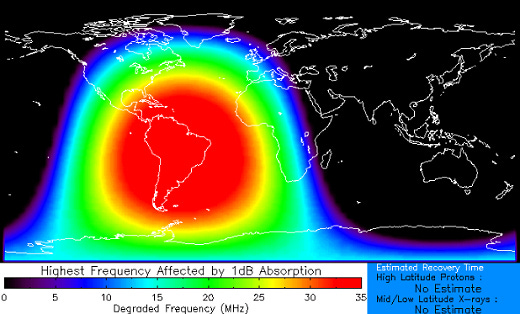X1-Class Solar Flare Particles Directed Towards Earth
Solar particles are on target to impact Earth, after a massive X1-class solar flare exploded hurdling radioactive energy towards our planet. Earth’s satellites, radios, and power grids may be susceptible to the solar flare, which happened October 28th, 2021.
What are Solar Flares?
Solar flares are an eruption of solar particles, called a coronal mass ejection (CME) and blast charged particles towards the earth at a million miles per hour.
Solar flares come in five catagories:
A-Class
B-Class
C-Class
M-Class
X-Class
C-class and below are not powerful enough to produce noticeable effects on the earth. M-class can produce radiation storms and cause radio blackouts. The X-class solar flare is the most powerful kind of flare. X-class solar flares are 10x more powerful than an M-class solar flare, and 100x more powerful than a C-class solar flare. The more powerful the solar flare the more noticeable the effects it has upon earth.
Within each of the five categories, solar flares are rated by their strength. Numbers from 1-9 are used to describe the intensity of each Class. Example: an M1-Class Solar Flare.
Largest Recorded Solar Flare -
X-Class solar flares can reach an intensity higher than 9. In 2003, a X28-Class solar flare was recorded, the largest in scientific history. See photo below
According to SpaceWeather.com, “an explosion on the Sun that happens when energy stored in twisted magnetic fields (usually above sunspots) is suddenly released.”
According to NASA, every eleven years solar flares increase in intensity. The sun’s “Solar Cycle 25”, started in December 2019, and will last eleven years.
AR2887
The massive explosion on the sun’s surface happened at 11:17 a.m. EDT (1517 GMT), according to an alert from the U.S. Space Weather Prediction Group, warning that the “[a]rea of impact consists of large portions of the sunlit side of Earth, strongest at the sub-solar point.” This solar flare came from a sunspot called “AR2887” and currently positioned in the center of the sun, directly facing the Earth. See photo below
AR2887 was responsible for two additional M-class solar flares that same day, according to SpaceWeather.com, providing insight into the potential predictability of these solar eruptions. A second sunspot, AR2891, also recently discharged an M-class flare toward the Earth.
The blast of AR2887 also launch a coronal mass ejection (CME) into space. “Coronagraph images are not yet available, but evidence for a CME is already pursuasive.” stated SpaceWeather.com.
What countries have been effected?
Some accelerated particles from the CME have already reached Earth. During the solar flare, a pulse of X-rays and UV radiation ionized the top of Earth's atmosphere, causing a strong shortwave radio blackouts throughout South America. “Aviators, mariners, and ham radio operators may have noticed strange propagation effects at frequencies below 30 MHz.” stated SpaceWeather.com.
When will the CME arrive?
SpaceWeather.com believes Earth will feel its impacts “probably on Oct. 30th or 31st,” referencing the “data from SOHO coronagraphs will allow a more precise forecast.”
https://twitter.com/spaceweather/status/1453757614798647307?s=20
Conclusion
The solar system’s complexity provides increasing demand for the advancement of human technology. However, with innovations comes strong opportunity for reliance upon that implemented technology. With our rapidly evolving AI world, what havoc could solar flares wreak? What steps can be taken to minimize susceptibility to these vulnerabilities?
https://twitter.com/reuters/status/1453838987177742344?s=20



